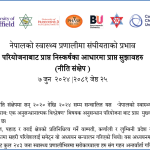The Prime Minister’s Council for Science and Technology is looking at the UK Science Landscape. The aim of this project is to build a picture of the whole research landscape in the UK and to develop a stronger evidence base. This evidence base will help to inform future strategic decision-making and help the UK to maintain and develop its excellence in research.
As part of this project, the Council for Science and Technology (CST) wish to understand better how the UK’s research community defines itself and the links and interconnections that exist between research disciplines. To help to do this, the UK Knowledge Landscape Tool has been developed and has been designed to gather data from researchers on the disciplines, dependencies and key infrastructure they think make up modern research.
To be part of this and experimental approach, users can log on and create an account on the UK Knowledge Landscape website.
CST are interested in crowd-sourcing a large amount of data which will be analysed for statistically significant patterns across the whole body of responses and then used to produce outputs such as taxonomies or maps. The more responses the tool has, the better the mappings are likely to be, therefore, they would welcome your input.
 Ageing: Science, Technology and Healthy Living – BU academics submit written evidence to the House of Lords Science and Technology Committee
Ageing: Science, Technology and Healthy Living – BU academics submit written evidence to the House of Lords Science and Technology Committee










 New Nepal scoping review on maternal & neonatal health
New Nepal scoping review on maternal & neonatal health Fourth INRC Symposium: From Clinical Applications to Neuro-Inspired Computation
Fourth INRC Symposium: From Clinical Applications to Neuro-Inspired Computation Writing policy briefs
Writing policy briefs Upholding Excellence: The Concordat to Support Research Integrity
Upholding Excellence: The Concordat to Support Research Integrity ECR Funding Open Call: Research Culture & Community Grant – Application Deadline Friday 12 December
ECR Funding Open Call: Research Culture & Community Grant – Application Deadline Friday 12 December MSCA Postdoctoral Fellowships 2025 Call
MSCA Postdoctoral Fellowships 2025 Call ERC Advanced Grant 2025 Webinar
ERC Advanced Grant 2025 Webinar Horizon Europe Work Programme 2025 Published
Horizon Europe Work Programme 2025 Published Horizon Europe 2025 Work Programme pre-Published
Horizon Europe 2025 Work Programme pre-Published Update on UKRO services
Update on UKRO services European research project exploring use of ‘virtual twins’ to better manage metabolic associated fatty liver disease
European research project exploring use of ‘virtual twins’ to better manage metabolic associated fatty liver disease